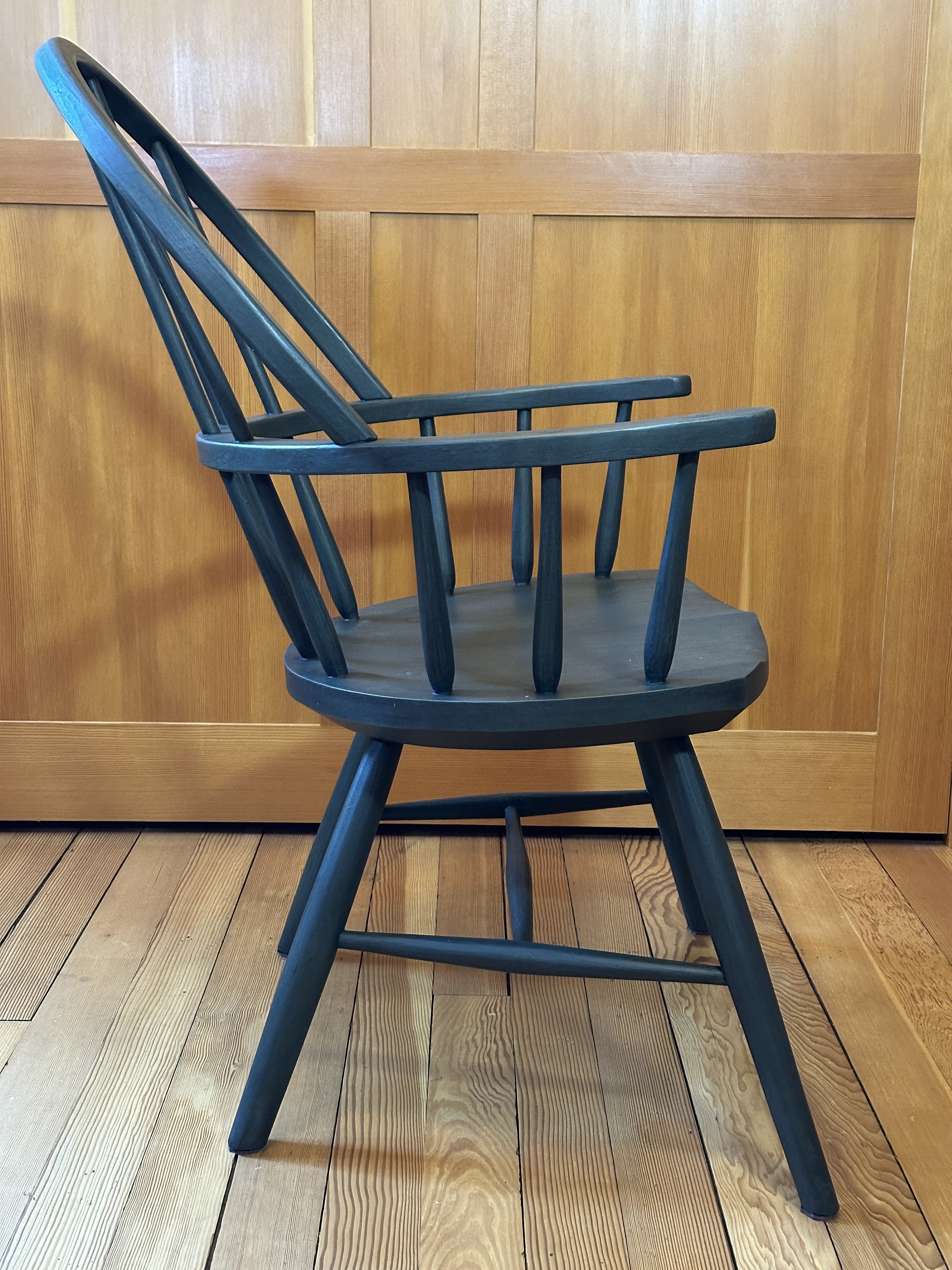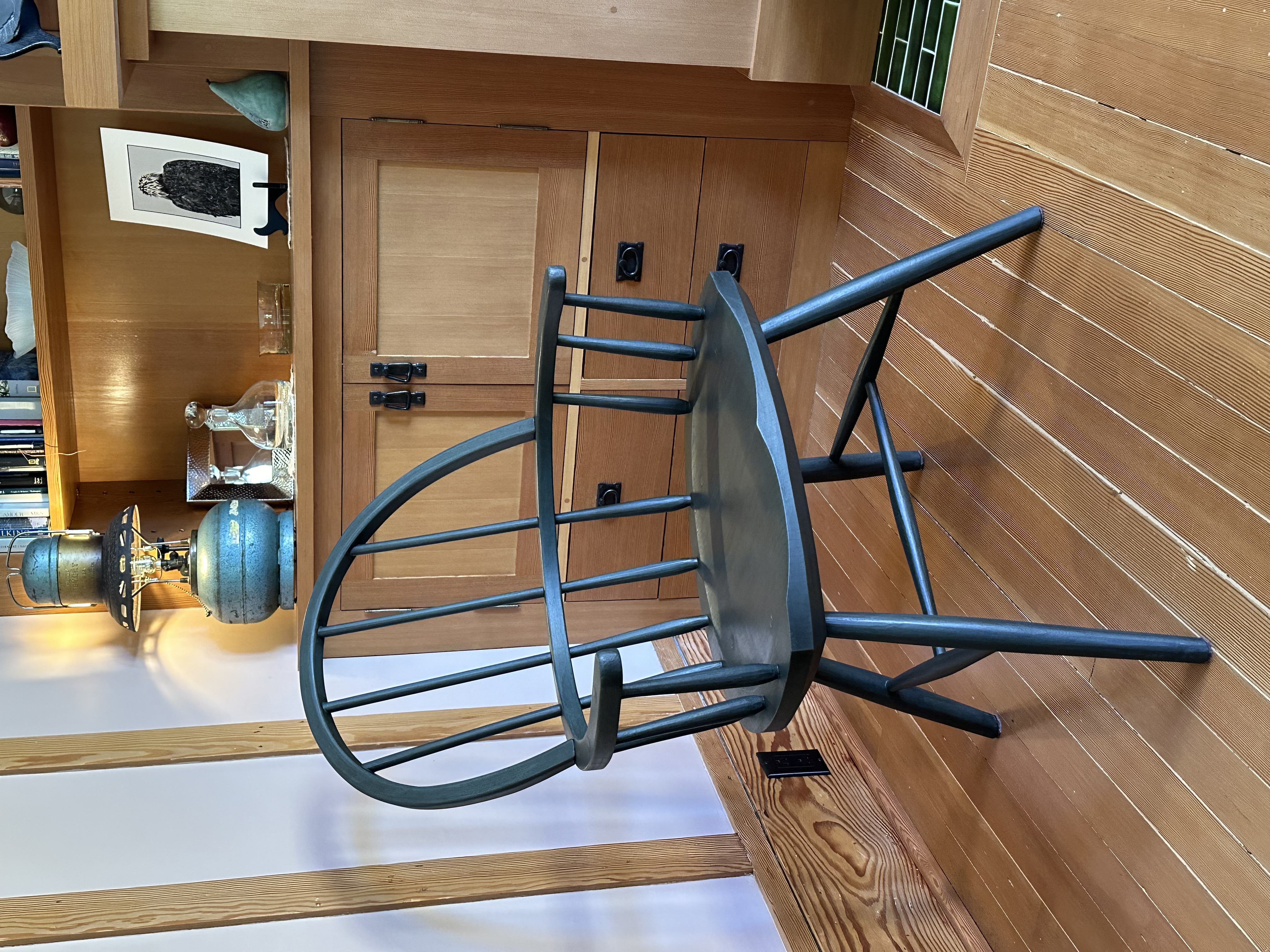This one was a bit of a struggle.
The previous chair was supposed to be a sackback, similar to chair number 11, but things did not quite work out that way. I had a string of failures trying to bend the arm bow and eventually ran out of wood. The result was a pretty good welsh stick chair in garry oak, so things worked out okay.
But I was still determined to make another sackback. And while I had run out of garry oak, I had a good supply of straight-grained elm. After one more failure with the steam bending, I managed to produce a decent arm bow. Legs stretches and sticks were already shaped, and the seat was roughed out, so with the arm bow and hoop back done all the pieces finally were in place.
Then some other priorities took over: there was a spring ski trip deep in the coast range. Before and after that trip my efforts were focused on the Fujikawa Garden Sign project. I started this chair in mid winter but did not get back to it until early summer.
The delay meant that the sticks were quite dry by the time I finally got around to assembling the chair. Which leads to the next problem. Sackbacks have more curves and complexity than the other chairs that I make, and for everything to fit together the sticks need to bend a bit. These nice dry sticks were reluctant to do the bending that I needed them to do, and I only realized this when I was into the glue-up. There was a lot of cussing and hammering involved in getting all the pieces in place. But eventually everything came together in the right shape. Nothing of consequence broke, but in the panic I managed to wack my thumb with the dead-blow hammer. Ouch.
There’s more. I was planning to finish the chair using John Porritt’s belligerent finishing technique. The first steps went pretty well, but as things progressed I gradually lost control of the process. The resulting finish had none of the warmth and subtlety that I wanted, it was a mess. So I got a lesson in removing wax, shellac, oil and milk paint. Shellac thinner and light abrasive pads remove everything down to the milk paint, and that gets removed with paste of calcium hydroxide and sodium carbonate, scrubbed out with non-abrasive pads. It was a tiring messy all-day job.
I decided not to tempt fate and went with a simple coat of milk paint and wax. No belligerence this time. The resulting chair looks solid and unassuming, it shows no signs of its difficult birth.
Elm, milk paint, linseed oil wax.


